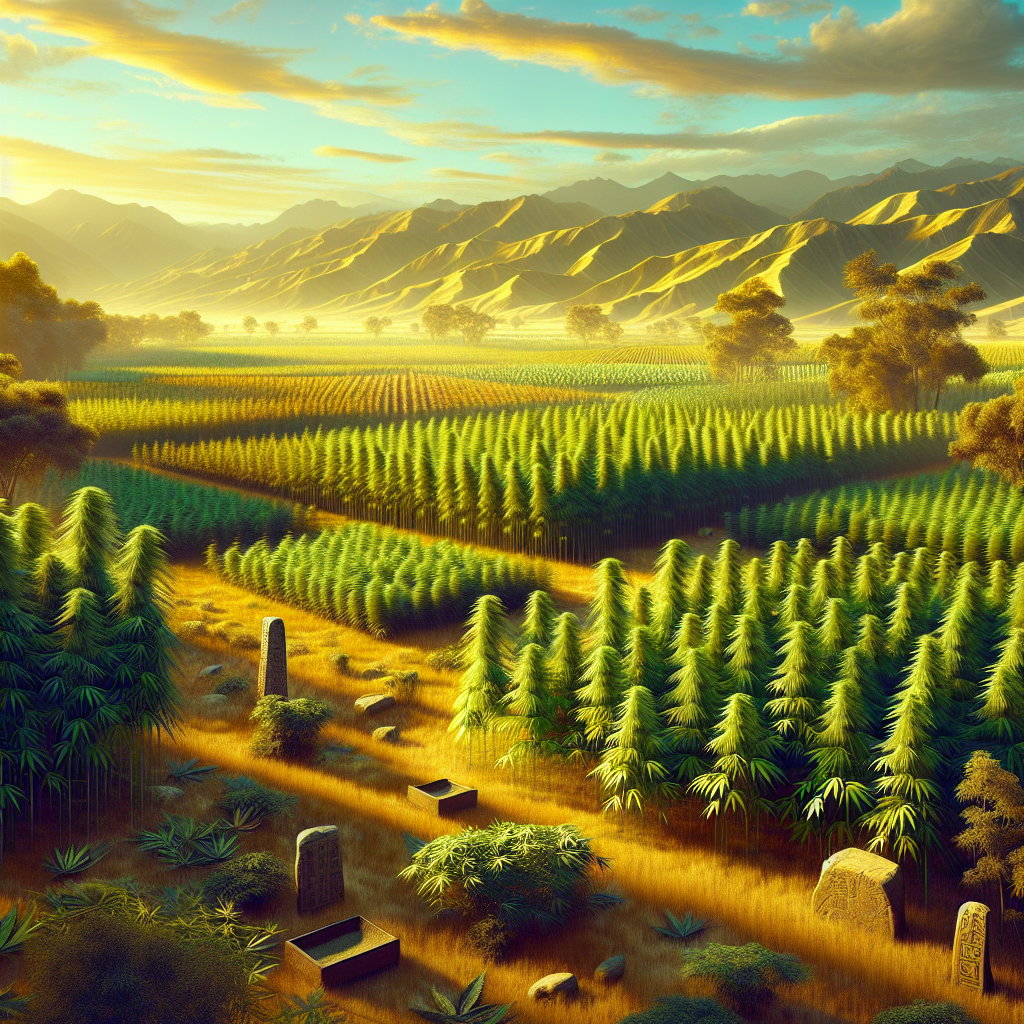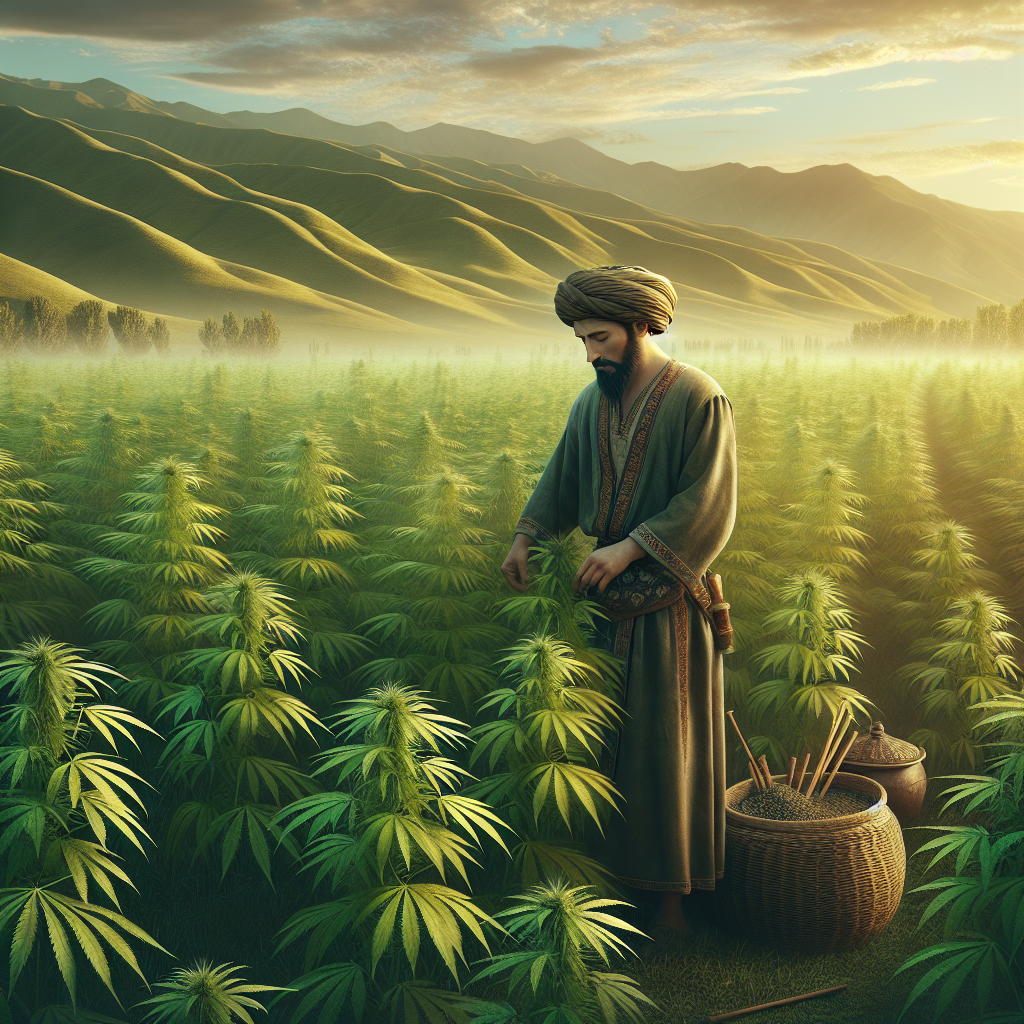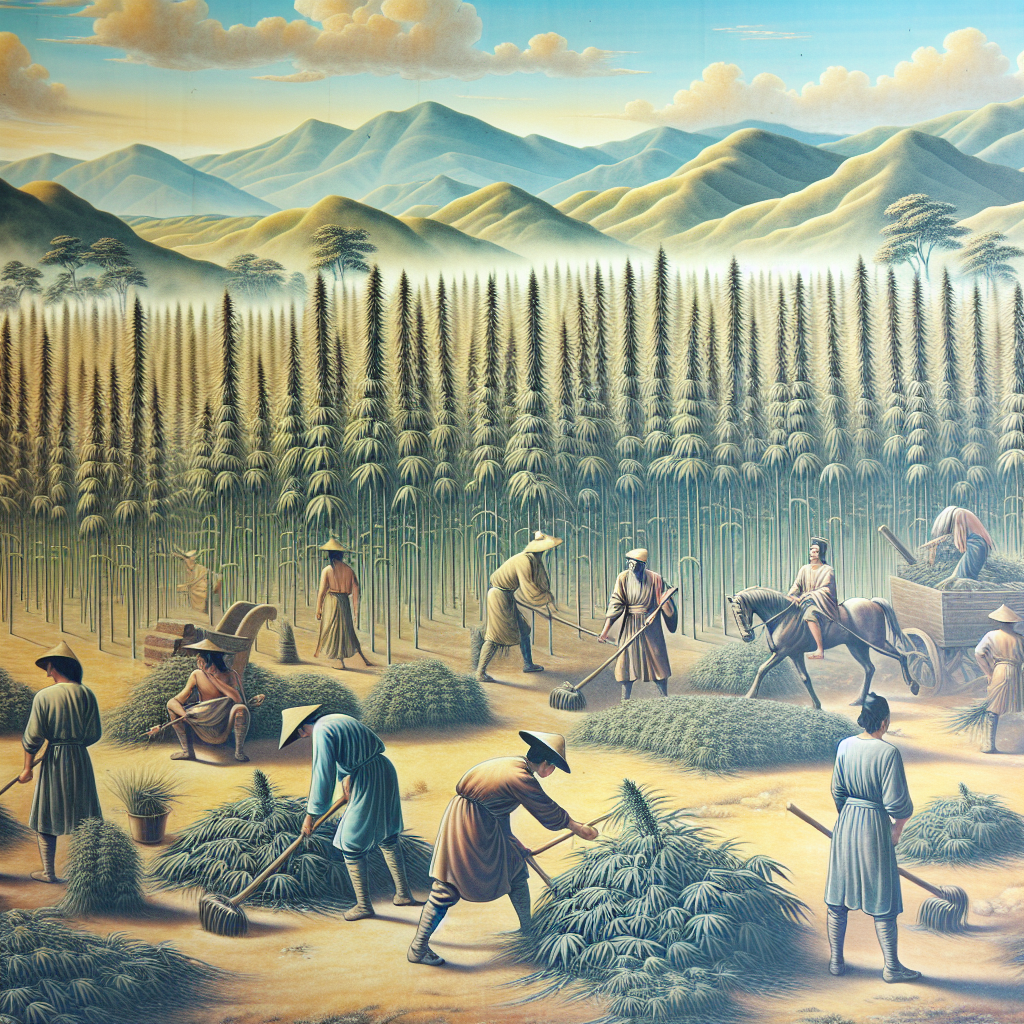Hemp, a versatile and historically significant plant, has been cultivated by humans for thousands of years. Originating in Central Asia, hemp spread across various civilizations, contributing to numerous industries and cultures. Its resilience and adaptability made it an essential crop, utilized for everything from textiles to medicinal purposes.
As we delve into the origins of hemp, it is essential to understand its classification. Hemp is a variety of the Cannabis sativa plant species, but unlike its more famous cousin marijuana, hemp contains only trace amounts of THC, the psychoactive compound. This distinction has allowed hemp to be legally grown and used in many parts of the world.
The historical significance of hemp is profound. Ancient civilizations, including the Chinese, Egyptians, and Indians, relied on hemp for its durable fibers, which were used to make ropes, clothing, and even paper. In Europe, hemp became a staple crop during the Middle Ages, essential for making sails and ropes for ships, thus playing a crucial role in maritime exploration.
In modern times, the resurgence of hemp cultivation is largely driven by its environmental benefits and the growing demand for sustainable products. Hemp requires less water and fewer pesticides than traditional crops, making it an eco-friendly alternative. Moreover, the advent of hemp-derived products like Delta-8 has opened new avenues for its use.
At Smoke Show Labs, we are dedicated to harnessing the potential of hemp, particularly in the Delta-8 industry. Let’s start your Delta-8 brand and explore the endless possibilities this remarkable plant offers.
Historical Significance of Hemp

Hemp’s historical significance is deeply intertwined with the development of human civilization. Dating back to 8000 BCE, archaeological evidence indicates that hemp was one of the first plants to be spun into usable fiber. Its robust nature and multifaceted utility made it indispensable to ancient societies.
In China, hemp cultivation began as early as 2800 BCE. The Chinese utilized hemp for a myriad of applications, including the production of textiles, ropes, and even early forms of paper. Hemp paper, for instance, revolutionized communication and record-keeping, laying the groundwork for modern documentation methods.
Moving westward, in ancient India, hemp was revered for its medicinal properties. Ayurvedic texts from around 2000 BCE reference the use of hemp in treating various ailments, emphasizing its importance in traditional medicine. The versatility of hemp ensured its place in the cultural and practical spheres of Indian society.
In the Mediterranean region, the ancient Egyptians harnessed hemp for both practical and spiritual purposes. They crafted durable ropes and sails from hemp fibers, essential for their expansive trade networks. Additionally, hemp seeds were used in rituals and for their nutritional value, highlighting the plant’s broad utility.
Throughout Europe, especially during the Middle Ages, hemp became a cornerstone of the economy. It was a vital resource for making sturdy textiles, ropes, and sails, which were crucial for the era’s burgeoning maritime activities. European colonists later brought hemp to the Americas, where it continued to play an essential role in early American industry.
The historical significance of hemp is a testament to its adaptability and utility, characteristics that continue to drive its resurgence in modern times. From ancient civilizations to contemporary society, hemp remains a plant of unparalleled importance.
Hemp Cultivation Process

The cultivation of hemp is a meticulous process that requires a combination of favorable conditions and careful management. The journey from seed to harvest encompasses several critical stages, each contributing to the quality and yield of the final product.
The first step in hemp cultivation is **soil preparation**. Hemp thrives in well-drained, loamy soil with a pH level between 6.0 and 7.5. Farmers often conduct soil tests to ensure the nutrient content is optimal, adding organic matter if necessary to enhance fertility. Proper soil preparation is essential for healthy root development and robust plant growth.
**Sowing the seeds** is the next phase, typically carried out in late spring when the risk of frost has passed. Hemp seeds are sown directly into the soil, with a planting depth of about 1-2 centimeters. The seeds need ample space to grow, so they are usually planted in rows with adequate spacing to prevent overcrowding and promote air circulation.
Once the seeds have germinated, **irrigation and nutrient management** become crucial. Hemp plants require consistent moisture, especially during the early stages of growth. However, overwatering can lead to root rot and other issues, so a balanced irrigation schedule is vital. Additionally, hemp plants benefit from a balanced supply of nitrogen, phosphorus, and potassium, which can be administered through organic or synthetic fertilizers.
As the plants grow, **weed and pest control** measures are implemented to protect the crop. Hemp is naturally resilient to many pests, but farmers often use organic pesticides and integrated pest management strategies to mitigate any potential threats. Regular weeding is also necessary to prevent competition for resources.
The **harvest** typically occurs in late summer to early autumn, depending on the specific variety and intended use of the hemp. For fiber production, harvesting is done when the plants are in the early flowering stage, while seeds are harvested when they reach full maturity. The harvested hemp is then dried and processed according to its end use, whether for textiles, oils, or other products.
The hemp cultivation process is a testament to the plant’s adaptability and resilience. With careful planning and management, farmers can produce high-quality hemp that meets the diverse needs of various industries.
Geographical Regions of Hemp
Hemp, known for its versatility and resilience, is cultivated in numerous geographical regions around the world. Each region offers unique characteristics that influence the growth and quality of hemp, making it a truly global crop.
**Asia** holds a significant place in hemp cultivation history, particularly in China, which is often considered the birthplace of hemp agriculture. The country has a long-standing tradition of growing hemp for its fibers, which are used in textiles and ropes. The favorable climate and rich soil in regions such as Yunnan and Heilongjiang contribute to China’s status as a leading hemp producer.
**Europe** has also embraced hemp cultivation, with countries like France, the Netherlands, and Germany at the forefront. France, in particular, is known for its high-quality hemp used in both industrial applications and the production of CBD products. The European Union’s regulations on hemp cultivation ensure that the crops are grown sustainably and within strict THC limits, fostering a reliable supply of hemp across the continent.
In **North America**, the United States and Canada have seen a resurgence in hemp farming following changes in legislation. The 2018 Farm Bill in the U.S. legalized the cultivation of hemp, leading to significant growth in states such as Colorado, Kentucky, and Oregon. Canadian provinces like Alberta and Manitoba also contribute substantially to the hemp industry, focusing on grain and fiber production.
**South America** is gradually emerging as a player in the hemp market, with countries like Uruguay and Colombia exploring the crop’s potential. The favorable climates and growing conditions in these regions support robust hemp cultivation, with a focus on both industrial and medicinal applications.
**Australia and New Zealand** have also entered the hemp cultivation scene. These regions benefit from diverse climates that support year-round hemp farming. The regulatory frameworks in Australia and New Zealand ensure that hemp is grown responsibly, with an emphasis on sustainability and environmental impact.
Each of these geographical regions brings its own strengths to the table, contributing to a diverse and dynamic global hemp market. The adaptability of the hemp plant allows it to thrive in a variety of climates and conditions, ensuring its continued cultivation and utilization worldwide.
Modern Uses of Hemp

In today’s world, hemp has found its way into a multitude of industries, showcasing its remarkable versatility and sustainability. Modern uses of hemp span across various sectors, highlighting its importance as a renewable resource.
One of the most prominent uses of hemp is in the **textile industry**. Hemp fibers are known for their strength and durability, making them ideal for producing eco-friendly fabrics. From clothing and accessories to home textiles like curtains and upholstery, hemp offers a sustainable alternative to traditional materials.
**Hemp seeds and oil** are gaining popularity in the food and wellness industry. Rich in essential fatty acids, proteins, and nutrients, hemp seeds are considered a superfood. They can be consumed raw, roasted, or ground into hemp protein powder. Hemp oil, extracted from the seeds, is used in cooking, as a dietary supplement, and in skincare products due to its moisturizing properties.
The **construction industry** has also embraced hemp, particularly through the use of hempcrete. Hempcrete is a bio-composite material made from the inner woody core of the hemp plant mixed with a lime-based binder. It is lightweight, non-toxic, and provides excellent insulation, making it a sustainable building material.
In the realm of **personal care**, hemp-derived products are becoming increasingly popular. Hemp oil is a common ingredient in lotions, balms, and shampoos, valued for its hydrating and anti-inflammatory properties. CBD, a compound found in hemp, is widely used in skincare and wellness products for its potential therapeutic benefits.
**Bioplastics** made from hemp are an eco-friendly alternative to conventional plastics. These biodegradable materials are used in packaging, automotive parts, and even 3D printing. Hemp-based bioplastics help reduce dependence on fossil fuels and mitigate plastic pollution.
The **paper industry** is another sector benefiting from hemp. Hemp paper is more durable and environmentally friendly compared to traditional wood pulp paper. It requires fewer chemicals and less water to produce, making it a sustainable choice for printing and packaging.
As the world continues to seek sustainable and eco-conscious solutions, hemp’s diverse applications make it a valuable resource for various industries. Its ability to replace less sustainable materials underscores the importance of hemp in the modern economy, paving the way for a greener future.
Sustainable Future with Hemp

As we face growing environmental challenges, the potential of hemp to contribute to a more sustainable future cannot be overstated. Hemp’s unique properties make it an ideal candidate for various applications that promote ecological balance and reduce our carbon footprint.
One of the most compelling aspects of hemp is its ability to **sequester carbon dioxide**. During its growth cycle, hemp absorbs more CO2 than most plants, making it an effective tool for combating climate change. This carbon sequestration, combined with its rapid growth rate, positions hemp as a vital crop in the fight against global warming.
Hemp also plays a significant role in **soil health and regeneration**. Its deep root system helps prevent soil erosion and improves soil structure by enhancing aeration and water retention. Additionally, hemp can be used in crop rotation to rejuvenate exhausted soils, reducing the need for chemical fertilizers and pesticides.
In the realm of **renewable energy**, hemp offers promising possibilities. Hemp biomass can be converted into biofuel, providing a cleaner alternative to fossil fuels. As the demand for sustainable energy sources grows, hemp biofuel could become an essential component of the renewable energy sector.
**Hemp-based materials** offer sustainable alternatives to conventional products. For instance, hempcrete, as mentioned earlier, is a durable and eco-friendly building material. Similarly, hemp bioplastics and textiles are paving the way for a circular economy, where products are designed to be reused, recycled, or biodegraded, minimizing waste and environmental impact.
The **economic benefits** of hemp cultivation further support its role in a sustainable future. Hemp farming can provide new opportunities for rural communities, creating jobs and stimulating local economies. With the global market for hemp products expanding, the economic potential of this versatile crop is immense.
As we look towards a more sustainable future, it’s clear that hemp has a crucial part to play. From its environmental benefits to its economic potential, hemp offers a pathway to a greener and more resilient world. By embracing hemp and its myriad applications, we can move closer to achieving a sustainable and eco-conscious future.
Are you ready to be part of this sustainable revolution? Let’s start your Delta-8 brand and contribute to a greener tomorrow!

